Orillia, Ontario, Canada
Architects: George Cumming (1915), Stanley Thompson (1923)
2,790 Yards, Par-34
Rating/Slope: 65.5/115
My Quick Review: Fun to imagine what this could be.
For a little 9-hole course in Orillia, Ontario, Canada (about an hour north of Toronto), Couchiching Golf Club has an impressive architectural pedigree. According to the Club's website (http://www.couchichinggolf.com/history.html), in 1915 George Cumming (one-time head professional at Toronto Golf Club and had a hand in designing courses like Mississaugua, The Summit, Scarboro and Brantford) laid out 9-holes on the site of the current golf course and in the mid-1920s Stanley Thompson was brought in to update and lengthen the golf course.
I know little of the course's history but would be very interested to learn more if others have any information.
The golf course as it sits today is quite short, and the greens are lacking in character, but it is a very fun way to spend a few hours, especially if one is able to use their imagination.
Reaching the first tee is no easy task, as the golfer must walk some 300 yards from the site of the current clubhouse (the old clubhouse was razed in 2001), across the 9th fairway, to reach the 1st tee. A curious routing decision should this be original, though I suspect it was not.
Right from the first tee it is clear that many of the course's original features have been lost. This curious built-up feature sits less than 100 yards from the tee and could have been an intimidating top-shot bunker when constructed (though this is not a feature I have seen often from Thompson).

As is common in Thompson's work (not sure of Cumming's) the fairways have extreme micro-contouring. Those familiar with Thompson's work have probably seen this feature at Kawartha and Allandale, among others.

The first is quite a strong hole, playing over 400 yards and to a fairway that tilts left while the hole moves right. This series of mounds guard the green from those golfers who chose to play to the inside of the dogleg:
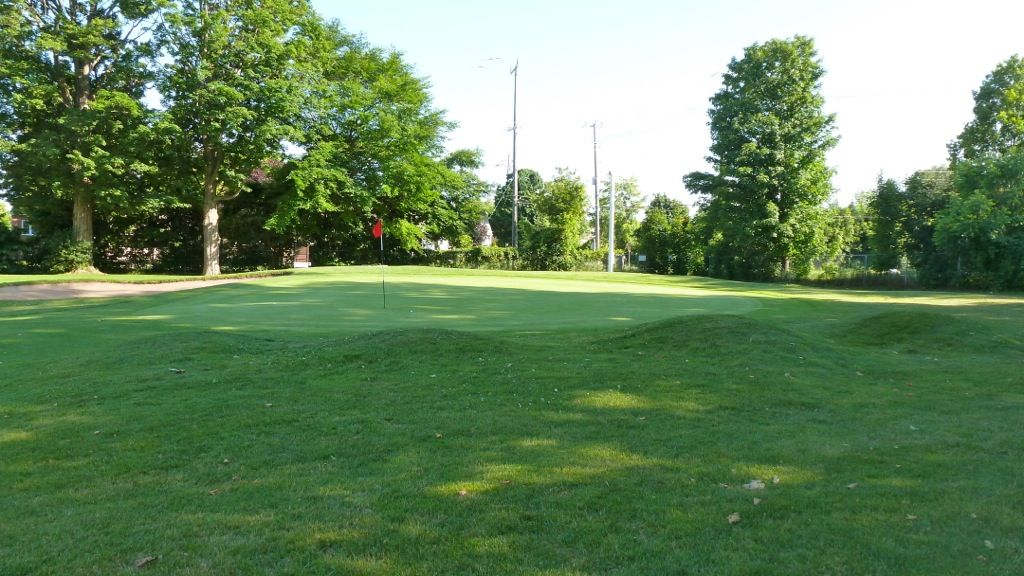
The second hole has become a very driveable par-4, playing under 300 yards and well downhill from the tee. Nonetheless, the hole's defense, out-of-bounds just steps right of the fairway, remains in full effect. Out-of-bounds also winds just behind the green, though I can't help but wonder what the orignal green and surrounds looked like.

The third hole is the only par-5 on the course, and though the green is set nicely into a corner of the property, the hole is forgettable. The 170 yard par-3 4th will challenge the golfer as it plays uphill to a small, raised green, but it too is of little interest.
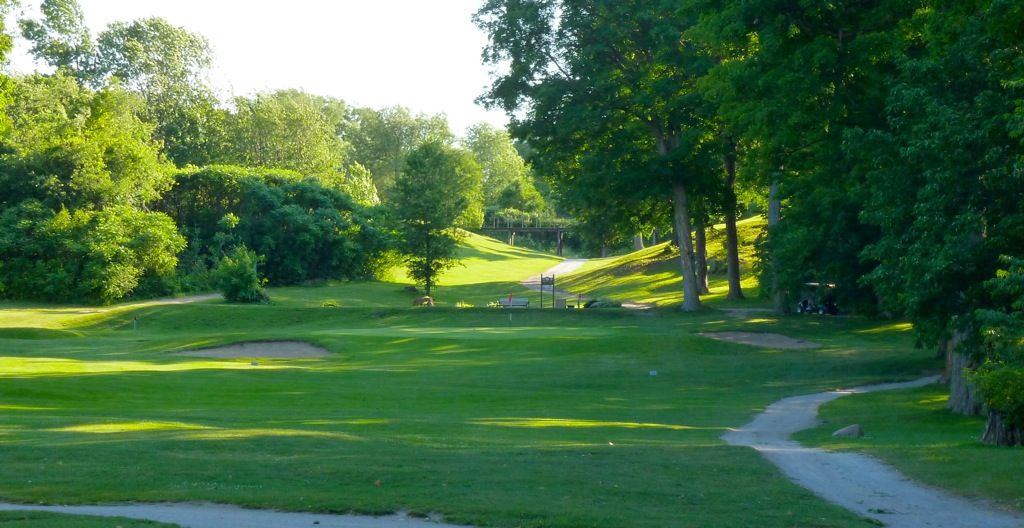
What I suspect is a new tee has been added to the fifth hole, and combined with trees on the right impeding on the lines of play, the interest in a reverse-cambre hole has been lost.
The sixth is a fun, short par-3 playing at only 130 yards. The fall-off to the right is intimidating and the skyline green (imagination required) makes judging distance that much more difficult. As expected, the green is tiny and the most contoured on the course.
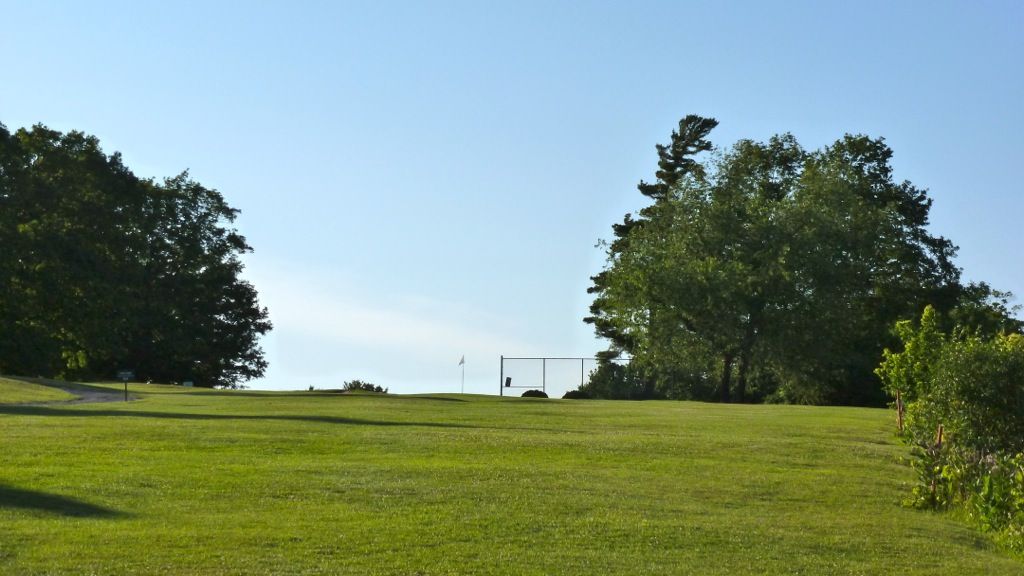
The seventh is a strong par-4 that requires an accurate tee shot played short of a gully 270 yards from the tee. As this uphill hole plays into the predominant wind, reaching the gully is not a consideration for many, but the 150+ yard shot that must be played over it, is. Trees have constricted the line of play, but if they were removed, the fall-off short and right of the green would make this one of Thompson's best par-4s.
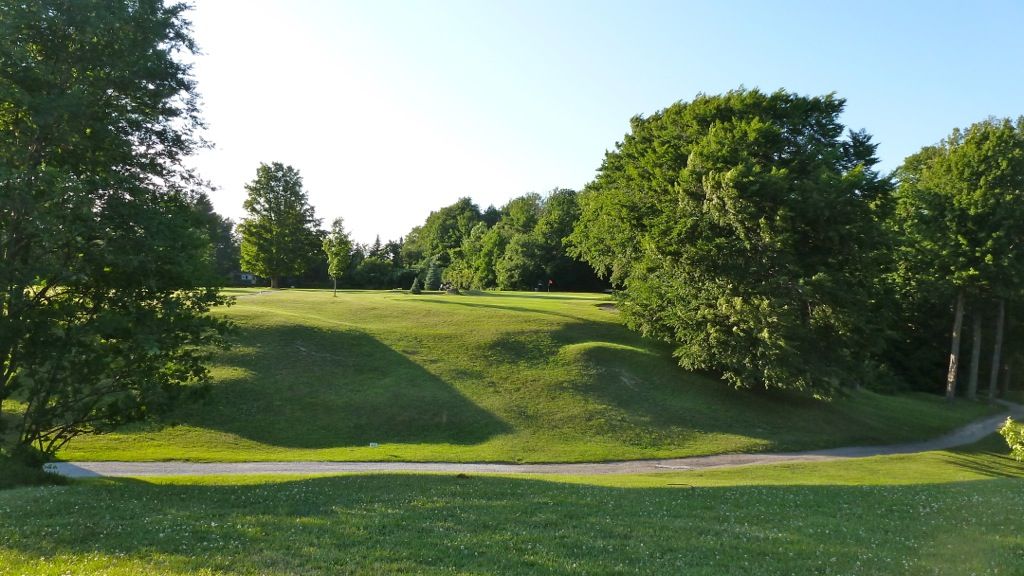
The 200 yard par-3 8th is of no interest played over flat land to a flat green that is predictably bunkered.
The 9th is another awkward hole as trees have eliminated options from the tee. Golfers have little choice but to play an iron from the tee to leave a short-iron into this interesting sunken/punchbowl green.
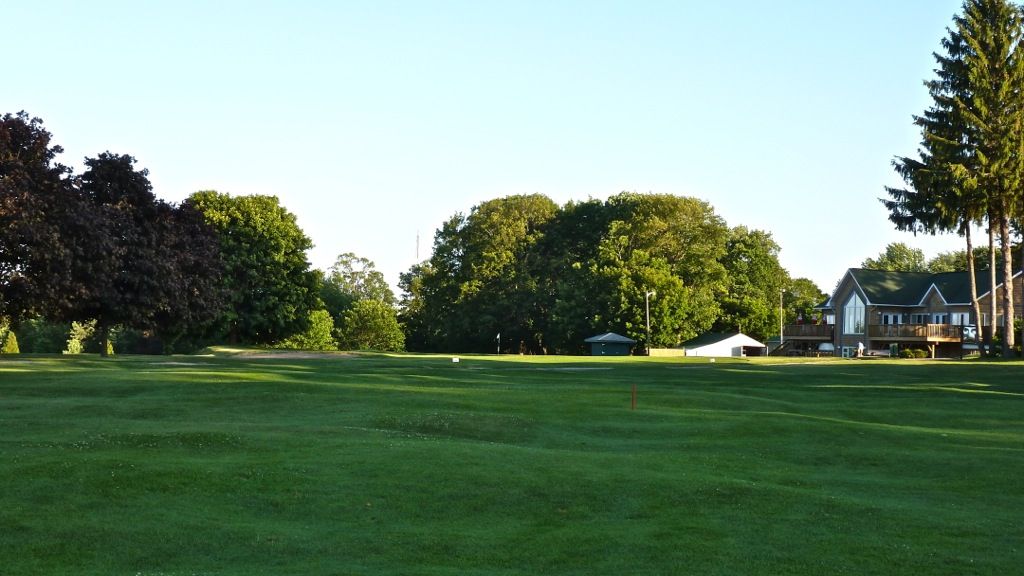

No comments:
Post a Comment